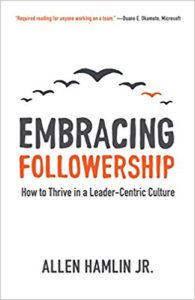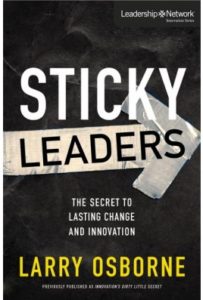Preaching is important. The Apostle Paul encourages his young friend Timothy to preach the word, in season and out of season (2 Timothy 4:2). As pastors and Christian leaders, this means we must always be prepared to preach and effectively communicate the transforming power of new life in Christ.
Most pastors aspire to be good preachers and we’ve all heard our share of sermons. Some great, many good, and some not so good. Effective preaching can be tricky. You must discern what God is saying, put it down on paper (or your laptop), and turn it into a sermon. Then you need to deliver that sermon to a crowd of people with different backgrounds, diverse needs and varying levels of spiritual maturity. And, of course, your goal isn’t that people will just hear your message, but that it goes beyond their ears and penetrates their hearts so that their lives, priorities and actions are changed. Every week!
That’s no small task and we deeply rely of God’s help and the Holy Spirit’s anointing to get that accomplished. While our culture and methods change, the word of God does not. And as preachers, we need to take this to heart as we are entrusted with communicating the gospel to the people of our day. Here are three preaching essentials to effectively reach people of today’s culture.
 Word
Word
In the first chapter of John’s gospel, Jesus is referred to as the Word (logos, in Greek). Jesus is the central person of the gospels. So, pointing people to Jesus should be one foundational component of our preaching. Whether you preach verse by verse or talk about different Biblical themes or contemporary topics, the basis of the words must be rooted in the truth of scripture and the reality of the person of Jesus. Doing anything less would be a sad disservice to your people.
But we’ve probably all heard sermons that spoke truth but somehow missed the mark at connecting with people. And while the Old Testament prophet Isaiah said that his words will certainly accomplish their purposes (Isaiah 55:11), we can help our listeners connect with our words by using a few, simple techniques. Continue reading

 The Crew
The Crew These three factors all relate to the employee / boss relationship. If your boss doesn’t really know you, if he doesn’t let you know you matter, if she doesn’t give you goals and guidelines by which to measure your work, you’ll most likely end up miserable.
These three factors all relate to the employee / boss relationship. If your boss doesn’t really know you, if he doesn’t let you know you matter, if she doesn’t give you goals and guidelines by which to measure your work, you’ll most likely end up miserable. Use Email R-Codes
Use Email R-Codes In Jim Collin’s classic book, Good to Great, he introduces readers to the idea of a Hedgehog Concept. Collins says the idea came from a famous essay by Isaiah Berlin called “The Hedgehog and the Fox.” It’s based on the ancient Greek parable: “The fox knows many things, but the hedgehog knows one big thing.” The fox uses multiple ideas and numerous strategies in its battles with the hedgehog. But, says Collins, the hedgehog always wins by using one simple, surefire approach – curling up into a ball. When the hedgehog employs this defensive position, it exposes his sharp spikes to deter attacks from predators. Despite the many and varied tactics the fox uses, the hedgehog always emerges victorious by using his one, focused strategy.
In Jim Collin’s classic book, Good to Great, he introduces readers to the idea of a Hedgehog Concept. Collins says the idea came from a famous essay by Isaiah Berlin called “The Hedgehog and the Fox.” It’s based on the ancient Greek parable: “The fox knows many things, but the hedgehog knows one big thing.” The fox uses multiple ideas and numerous strategies in its battles with the hedgehog. But, says Collins, the hedgehog always wins by using one simple, surefire approach – curling up into a ball. When the hedgehog employs this defensive position, it exposes his sharp spikes to deter attacks from predators. Despite the many and varied tactics the fox uses, the hedgehog always emerges victorious by using his one, focused strategy. Allen Hamlin Jr’s book Embracing Followership – How to Thrive in a Leader-Centric Culture is a fascinating look at the unique nature of followership, its relation to leadership, and the critical way it builds the kingdom and enhances the body of Christ. This work dives into the topics of influence and authority, formal and informal power structures, and is reminiscent of John Maxwell’s 5 Levels of Leadership, Mike Bonem & Roger Patterson’s Leading From The Second Chair, and Clay Scroggin’s How To Lead When You’re Not In Charge. However, Hamlin’s approach is unique in that it focuses specifically on the follower. Here are three areas that stood out to me.
Allen Hamlin Jr’s book Embracing Followership – How to Thrive in a Leader-Centric Culture is a fascinating look at the unique nature of followership, its relation to leadership, and the critical way it builds the kingdom and enhances the body of Christ. This work dives into the topics of influence and authority, formal and informal power structures, and is reminiscent of John Maxwell’s 5 Levels of Leadership, Mike Bonem & Roger Patterson’s Leading From The Second Chair, and Clay Scroggin’s How To Lead When You’re Not In Charge. However, Hamlin’s approach is unique in that it focuses specifically on the follower. Here are three areas that stood out to me.
 I hear so many brilliant and inspiring thoughts each year, I try to tweet them all. But, because I can’t keep up, last year I wrote a blog on the
I hear so many brilliant and inspiring thoughts each year, I try to tweet them all. But, because I can’t keep up, last year I wrote a blog on the  Reviewing Sticky Leaders, by Pastor Larry Osborne was a joy because the insights in this book are inspiring, important, and easy to understand. As a church consultant, I’ve read many wonderful books on church leadership, and Sticky Leaders does not disappoint. I highly recommend you read it. Here are four areas Osborne emphasizes that are worth considering.
Reviewing Sticky Leaders, by Pastor Larry Osborne was a joy because the insights in this book are inspiring, important, and easy to understand. As a church consultant, I’ve read many wonderful books on church leadership, and Sticky Leaders does not disappoint. I highly recommend you read it. Here are four areas Osborne emphasizes that are worth considering.